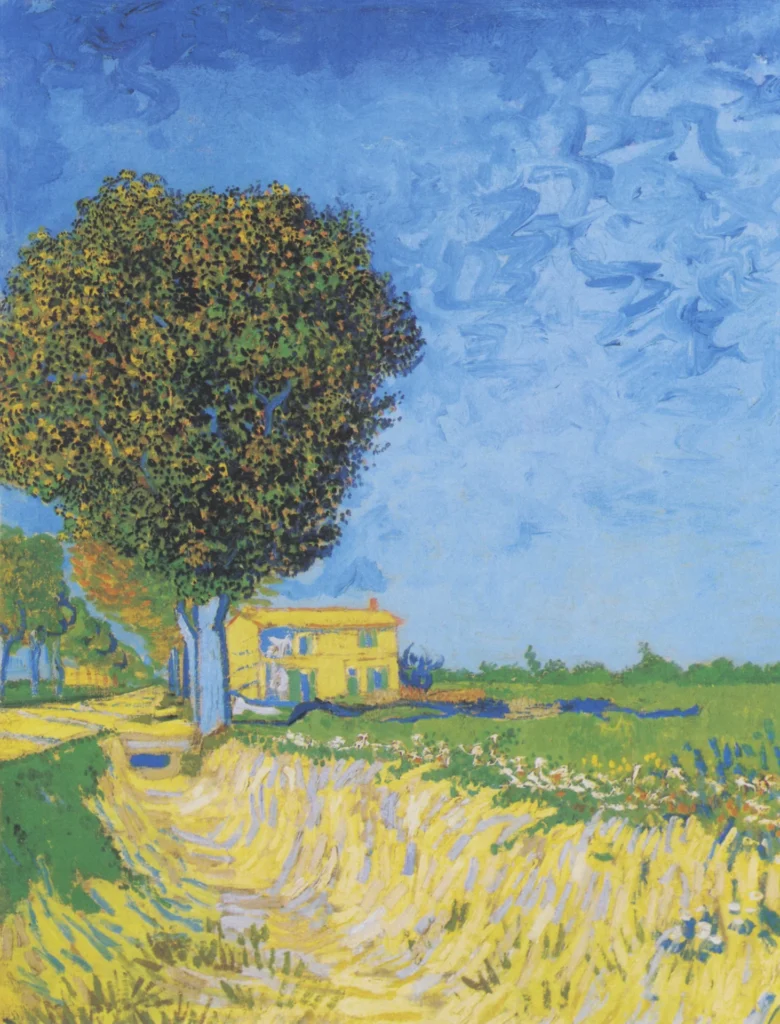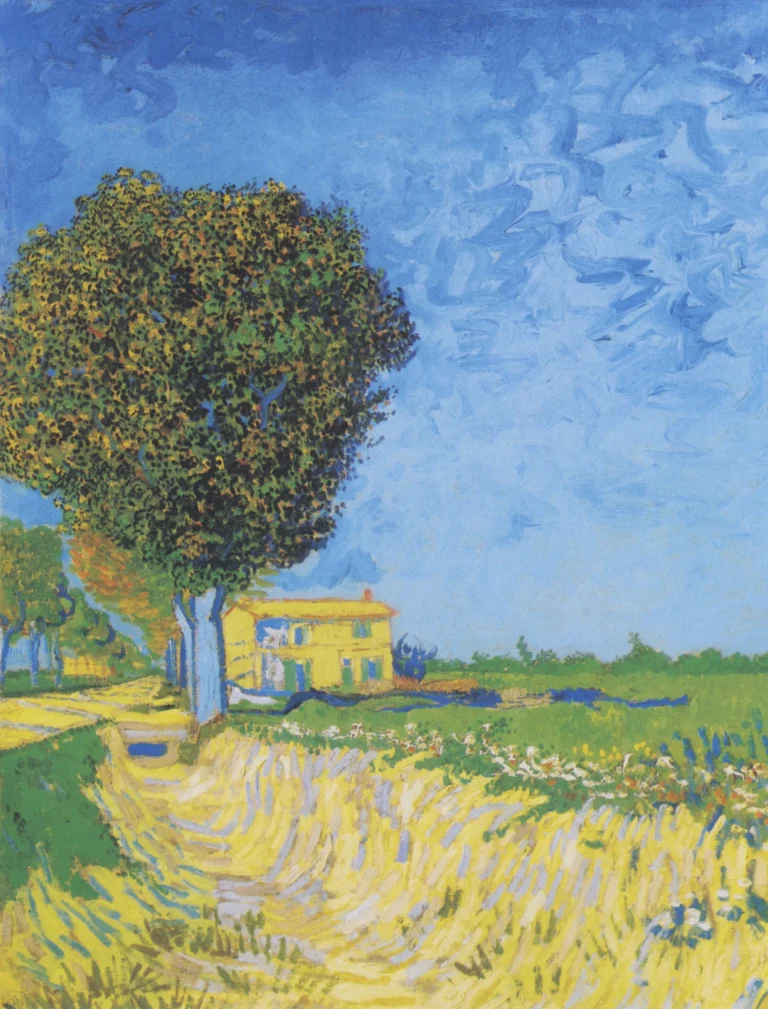Avenue At Arles With Houses (1888)
Avenue at Arles with Houses is a remarkable artwork by Vincent van Gogh, painted in 1888 during his fruitful stay in Arles, France. The painting showcases a lively street scene adorned with trees and houses, highlighting Van Gogh's bold use of color and dynamic brushstrokes. This piece reflects his fascination with capturing the ordinary moments of life and the unique charm of the Provençal landscape. The vibrant hues and lively textures convey the energy of the scene, making it a quintessential example of Van Gogh's mature style during this transformative period.
Year 1888
About the Artwork
The story behind Avenue at Arles with Houses is deeply intertwined with Vincent van Gogh's quest for artistic inspiration. In February 1888, Van Gogh relocated to Arles, hoping to find the radiant light and rich colors of the south of France. This period was crucial for his development as he adopted a more expressive style, characterized by energetic brushwork and a vivid color palette. In this painting, he focuses on the charm of Arles, capturing the essence of daily life in the town. It reflects Van Gogh's desire to depict the beauty in the mundane and offers a glimpse into his innovative approach influenced by the vibrant surroundings of Provence.
Did You Know
Liked what you see? Add it to your collection.
Enjoyed reading? Share it.
... continued
Avenue at Arles with Houses
painted in 1888, is one of the works created by Vincent van Gogh during his highly productive period in Arles, France.
Location and Period
Van Gogh moved to Arles in February 1888, seeking the bright sunlight and vibrant colors of the Provençal landscape. This painting is from the same period when he was experimenting with bold colors and new techniques.
Description
The painting depicts a street scene in Arles, showing houses and trees along an avenue. The work is characterized by Van Gogh's typical use of bold, expressive brushstrokes and vivid colors. The scene captures the everyday life and architecture of Arles, reflecting Van Gogh's interest in the ordinary and the beauty of the mundane.
Style and Technique
Like many of his works from this period, Avenue at Arles with Houses features the use of complementary colors to enhance luminosity. This technique, influenced by the Impressionists and scientific studies on color, was a hallmark of Van Gogh's style during his time in Arles.
Context
This painting is part of the extensive body of work Van Gogh produced in Arles, which includes series of wheat fields, sowers, orchards in bloom, and portraits of local people such as the postman Joseph Roulin and his family. The period in Arles marked a significant phase in Van Gogh's artistic development, characterized by bold experimentation and innovation.
Exhibitions and Provenance
While specific details about the current location and exhibitions of Avenue at Arles with Houses are not provided in the sources, Van Gogh's works from this period have been widely exhibited in various museums, including the Metropolitan Museum of Art and the Van Gogh Museum in Amsterdam.










